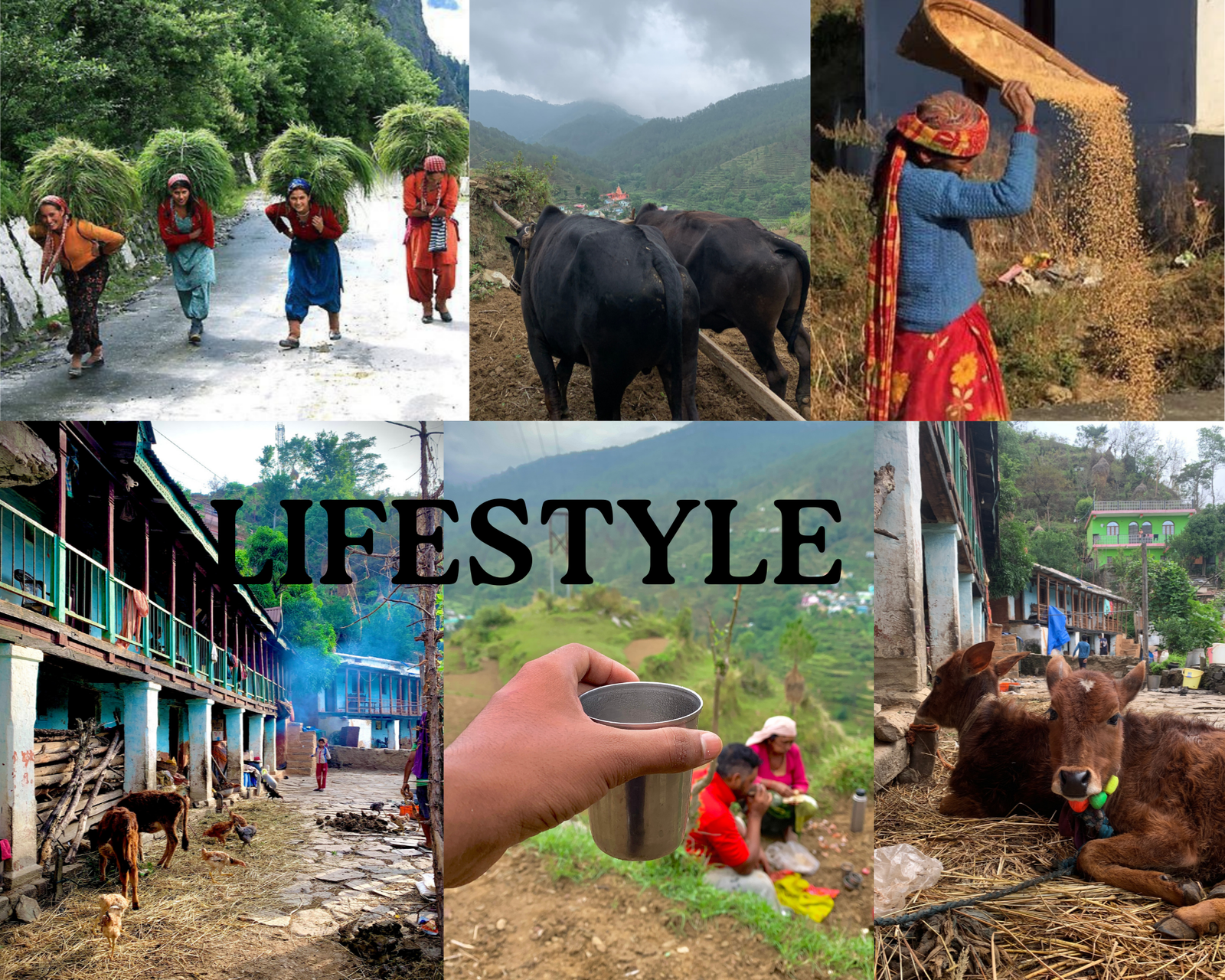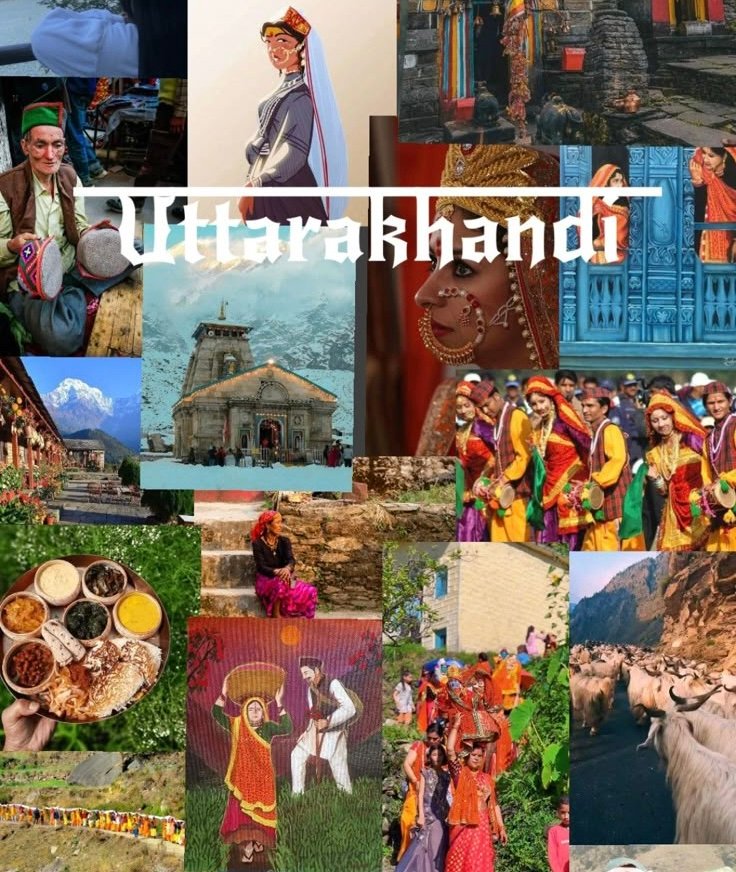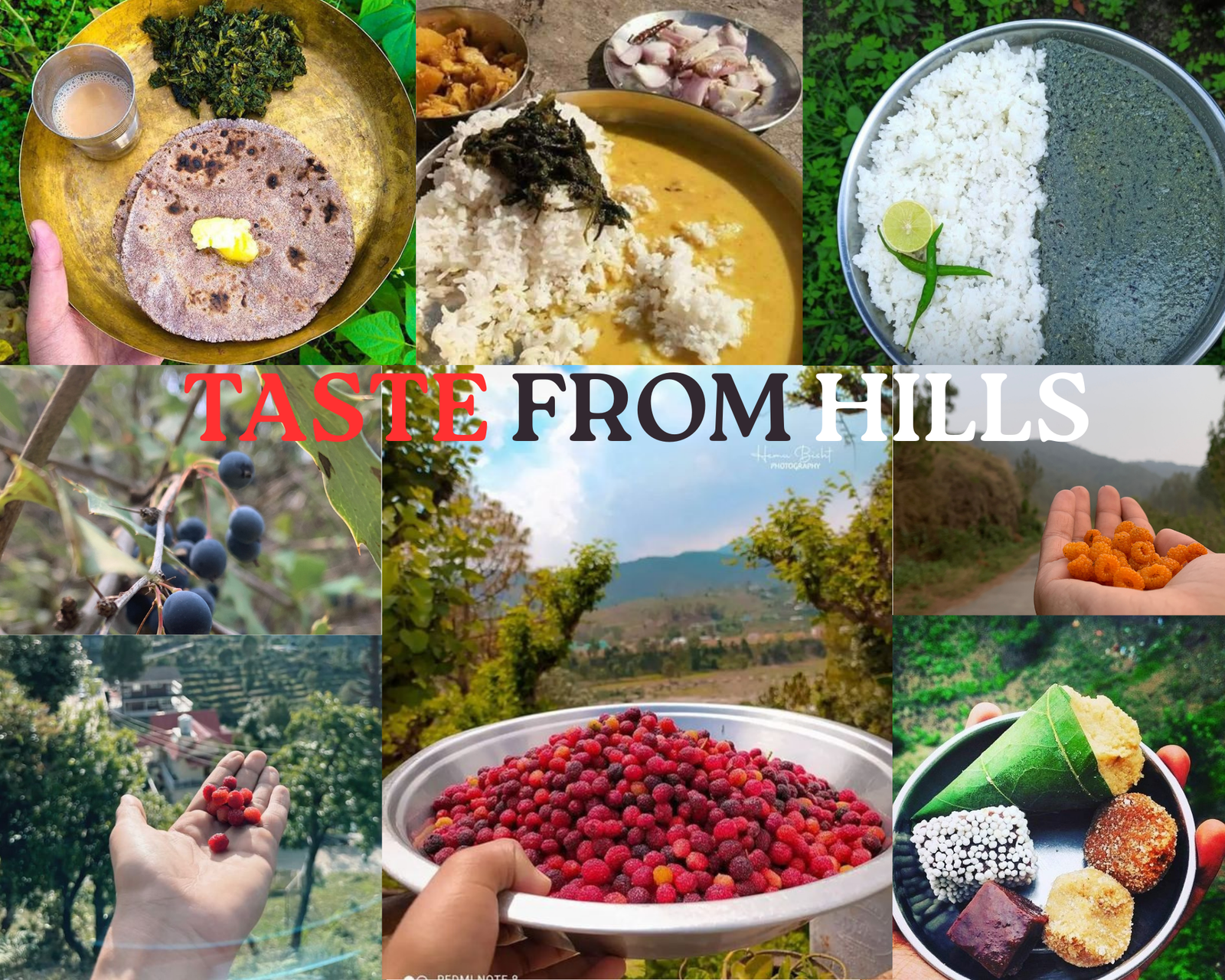Whenever I think of Uttarakhand, I don’t just think of snow-covered peaks or famous places like Mussoorie or Rishikesh. I think of mornings filled with mist, evenings spent around a fire, and food that doesn’t just fill your stomach but also warms your heart. The lifestyle here is very different from what we’re used to in cities, and that difference is exactly what makes it so beautiful.
People often ask—what’s so unique about life in the mountains? I say, it’s not about one or two things. It’s about the whole rhythm of life. The way people wake up, the way they eat, work, talk, and even rest. It’s a slower life, but it’s also richer in ways that matter.
A MORNING IN THE HILLS
In the mountains, the day begins much earlier than in the cities. By the time we city folks even think of leaving our beds, half the village is already busy. Morning here isn’t about rushing. It’s about calmness.
You wake up to the sound of birds, temple bells, or sometimes just silence broken by a cow calling out. Women light the chulha (wood stove), and smoke rises slowly, mixing with the cold mountain air. There’s a smell of burning wood that becomes part of your memory forever. Men leave for the fields, tools slung over their shoulders, while women balance household chores with farming.
And then there are the kids. Small, thin kids carrying bags that look heavier than them, walking uphill and downhill every single day just to reach school. Some walk an hour, some two, but they don’t complain. Once I joined a group of kids on their walk near Chamoli. I was out of breath in ten minutes, while they were laughing, racing each other, and even singing songs. That’s when I realized—life here makes you strong in ways no gym or workout can.
FOOD THAT FEELS LIKE A HUG
Food in Uttarakhand is not fancy. But it’s unforgettable. The best part? It’s grown locally, cooked slowly, and eaten with patience. Meals are small in variety but huge in taste and nutrition.
Take bhatt ki dal—a black soybean curry that’s earthy, filling, and full of protein. Or aloo ke gutke, spicy potatoes tossed in mustard oil, something that looks simple but feels addictive once you start eating. Then there’s kafuli, a green curry made from spinach and fenugreek, thick and warming, best with hot rice or mandua rotis.
Speaking of mandua ki roti (flatbread made from finger millet)—I had it in a village in Pauri on a freezing evening, along with a dollop of ghee. That combination, believe me, is magic. It doesn’t just fill your stomach, it fills your soul.
What makes the food special isn’t only the ingredients but also the way it’s cooked. Iron pans, wood stoves, and slow cooking—things we’ve lost in modern kitchens. And nothing goes to waste. Leftover rice becomes breakfast, leftover curry becomes stuffing for rotis. For them, wasting food is unthinkable, because every grain is earned with sweat.
CLOTHING STYLE
Clothes in Uttarakhand are not about style statements, they’re about survival and tradition. Winters can be harsh, and wool is the biggest savior. Almost every household has someone who knits. Sweaters, socks, gloves, shawls—you name it, they make it.
I still have a pair of woolen socks gifted by an old lady in Almora. They don’t even match properly—one is slightly bigger than the other. But they’re warmer than any branded socks I’ve ever owned. That’s the beauty of handmade things. They carry love inside the threads.
Women in villages wear bright pichoras during special occasions—a yellow-orange scarf with red patterns. It’s more than just clothing; it’s identity. Men, on the other hand, wear wool coats, churidars, and caps. In the cities like Dehradun and Haldwani, of course, you’ll see jeans, jackets, and modern fashion. But when there’s a wedding or family ritual, people proudly return to their traditional wear.
EVENING THAT ACTUALLY BELONG TO PEOPLE
If you ask me what I love most about the hills, it’s their evenings. City evenings are about traffic jams, noise, deadlines, or binge-watching shows. In Uttarakhand, evenings actually feel like evenings.
The pace slows down. Families sit together around a fire or in the courtyard. Neighbours drop by without calling first, and nobody finds it annoying. Tea is served—strong, hot, sometimes sweet enough to make you wince, but perfect after a day of work.
One evening in Kumaon, there was no electricity for four hours. I expected frustration. But instead, the family lit a lantern and carried on as if nothing had happened. We all sat outside, talking, sipping tea, and looking up at a sky full of stars. That night, I understood why people here don’t complain much. When you have peace, nature, and family around you, you really don’t need much else.
A BOND WITH NATURE
The biggest difference between city life and mountain life is the relationship with nature. In cities, nature is like a luxury—we visit parks on weekends or plan vacations to “get away.” In Uttarakhand, nature isn’t an escape; it’s daily life.
Rivers aren’t just water; they’re mothers. Mountains aren’t just rocks; they’re guardians. Trees aren’t just resources; they’re companions. People respect nature deeply, and it shows in their habits. Cloth bags instead of plastic, vegetables grown at home, cows treated like part of the family.
Even their homes reflect this connection. Houses made of stone and wood, designed not by architects but by generations of knowledge about weather and terrain. Roofs are slanted to let snow slide off. Courtyards are open to let in the sun. Everything has a reason, and that’s what makes it practical and beautiful at the same time.
MODERN TOUCH SAME HEART
Of course, Uttarakhand is changing. Cities like Dehradun, Haridwar, and Rudrapur are full of coaching centers, cafes, and malls. Youngsters are ambitious, chasing education and careers. Many move to metros for work, but interestingly, many also return.
They come back to start homestays, organic farms, eco-tourism ventures. Some run yoga retreats in Rishikesh, others open small cafes in Mussoorie. There’s a mix now—modern opportunities and traditional values walking side by side.
Once I met a young guy in Ranikhet who left a software job in Bangalore to run a homestay. When I asked him why, he just smiled and said, “Yahan sukoon hai. Paisa wahan bhi tha, par sukoon sirf yahan hai.” That one line probably sums up the difference in lifestyle more than anything else.
THE ESSENCE OF IT ALL
So what’s the lifestyle of Uttarakhand? It’s not about luxury cars or high-rise apartments. It’s about waking up to clean air, eating food that comes from your own land, wearing clothes that are handmade with love, and spending evenings in conversations instead of notifications.
It’s about living close to nature and closer to people. It’s about valuing what you have instead of running after what you don’t. And it’s about balance—modern enough to keep up with the times, but traditional enough to never forget where you come from.
Every time I leave Uttarakhand, I carry more than just photographs. I carry reminders—that happiness isn’t about having more, it’s about needing less. Maybe all we really need is a small home in the hills, a plate of warm dal, and a sky full of stars.
And that, I believe, is the real Uttarakhand lifestyle.




